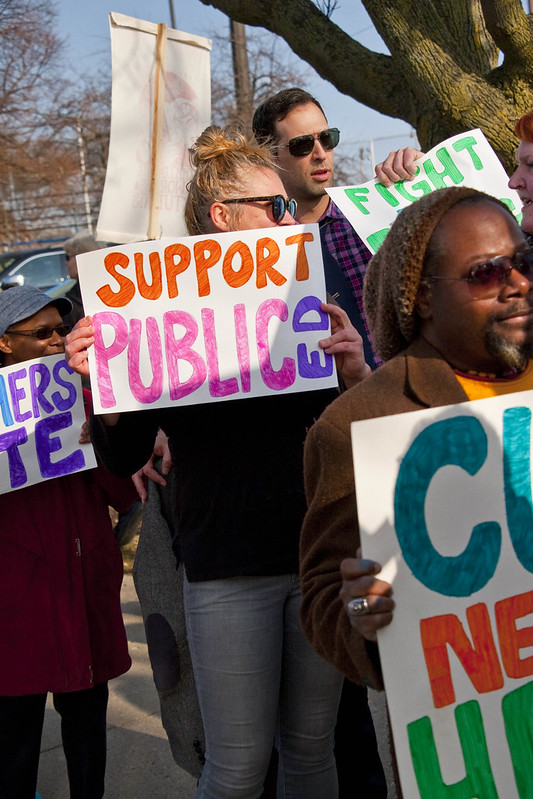Randy Richardson is a former educator and retired associate executive director of the Iowa State Education Association.
On January 26, a month later than planned, the Iowa Department of Education released a summary of the annual certified enrollment numbers for Iowa’s public and private K-12 schools. The agency’s news release also provided our first look at the impact “education savings accounts” (also known as school vouchers) have had on public school enrollment across Iowa.
Public school enrollment for the current academic year was 483,699, a decrease of 2,776.8 students (0.57 percent) from the previous year. Conversely, private schools had a total enrollment of 36,195 students, an increase of 2,503 students (7.4 percent) over the previous year.
When you dig into the voucher numbers, however, things begin to get interesting. According to the Department of Education, 16,757 students used vouchers this year to attend a private school.
Of those 16,757 students with education savings accounts, 2,135 attended a public school last year. It’s not a coincidence that this number is very close to the drop in enrollment of public schools (2,503). The department also noted that 3,513 of the students using vouchers were kindergarten students.
Worth noting: over the past five years, the average number of kindergarten students in private schools (before the legislature approved the governor’s school voucher plan) was 3,213. So we can assume that even if the state weren’t funding education savings accounts, the vast majority of those kindergartners would have enrolled in private schools anyway.
The department’s press release stated that “approximately 33.7% of the 16,757 student participants who used an Education Savings Account (ESA) at an Iowa accredited nonpublic school for the 2023-24 school year did not previously attend a nonpublic school.”
That’s significant, but also misleading. We know 2,135 students using a voucher attended a public school last year. We also know that the normal pre-voucher private school kindergarten enrollment averaged 3,213 students. Students who would never attend a public school. That means about 300 more kindergarten students than average enrolled in a private school.
Based on those numbers, we can determine that approximately 2,435 students (2,135 plus 300 additional kindergarten) who enrolled in private schools this year would have enrolled in a public school if not for the voucher program.
Although the agency press release touts that 33.7 percent of the students using vouchers did not previously attend a private school, the number is actually much lower. Factoring in the number of kindergarten students who would probably never have gone to a public school, we can see that only about 14.5 percent of the students using vouchers this year had previously attended public schools. That means that 14,322 or 85.5 percent of the vouchers went to students already enrolled in private schools or, in the case of kindergarten students, those who would have enrolled in a private school anyway.
One of the criticisms of vouchers systems is that the majority of the funding goes to students already attending a private school. Based upon the numbers above, that appears to be the case in Iowa.
Finally it’s apparent that some school districts were hit harder by the availability of vouchers. In particular, some suburban school districts that faced controversial battles over school board seats and policies were greatly affected. Johnston and Ankeny, two districts that normally see increased enrollment every year, both lost students. Ankeny’s enrollment dropped by 34.2 students. More than 400 Ankeny students used an education savings account to attend one of eighteen private schools in the Des Moines metro area.
Johnston’s enrollment dropped by 146.4 students as 144 students used vouchers to attend a private school. Linn-Mar, a district in the Cedar Rapids suburbs that faced controversy, saw enrollment drop by 118.9 students as 231 students accessed vouchers.
Iowa’s education savings accounts will cost $127,939,695 this year alone (not counting the $1,250 the state will provide to public school districts for each student who lives in the area but attends a private school). That $127.9 million works out to about $264 for every student in the public school system. Providing that level of additional funding to public schools would have given them the opportunity to make significant changes. Instead, the voucher program will expand over the next two years, taking much needed money away from our public schools while largely benefiting students who already attended a private school.
Top image: “Milwaukee Public School Teachers and Supporters Picket Outside Milwaukee Public Schools Adminstration Building Milwaukee Wisconsin 4-24-18 1053” by www.cemillerphotography.com is licensed under CC BY-SA 2.0.

